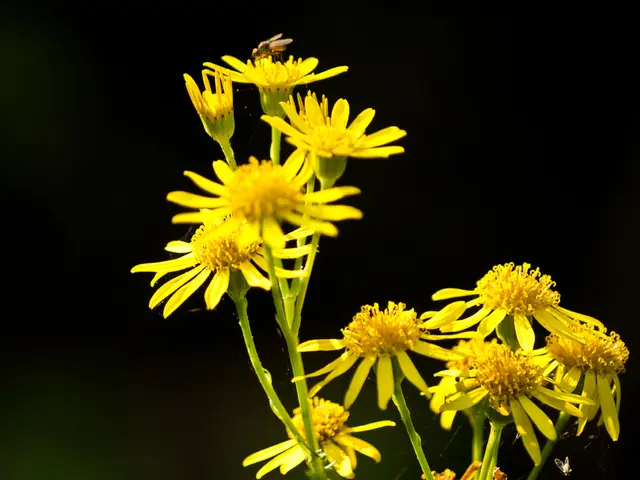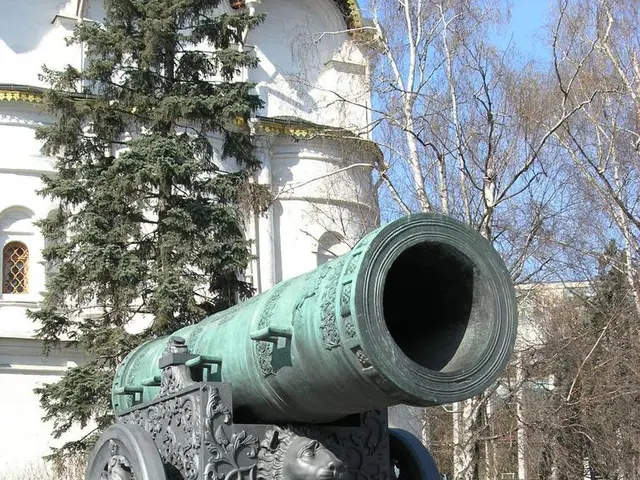Kamchatka, Russia: A Wilderness Adventure Amidst Reindeer Herders and Volcanoes
Roaming Russia's Far East: A Journey Amongst Nomadic Reindeer Herders in Kamchatka
Venturing through the remote Russian peninsula of Kamchatka, even in the biting cold of winter, I found myself surrounded by the camouflaged forms of nomadic Even reindeer herders. On the frozen tundra, under the shadow of towering volcanoes, we encountered this indigenous group upholding their ancestral traditions.
Braving freezing temperatures and howling winter winds, we traversed the barren landscapes of Kamchatka, clinging aboard snowmobiles. With the 60 mph blizzards and sub-zero temperatures, it was a race against time to escape the treacherous alpine plateaus.
"I was starting to question if we'd make it back alive," I muttered to myself as we trudged through the heart of this lesser-known wilderness.
Comprising the size of California, yet home to only 400,000 residents, this peninsula jutting out into the Pacific Ocean had been a secret cache for centuries, until it emerged from the veil of secrecy following the collapse of the Soviet Union. Earlier, this wilderness had been off-limits to outsiders due to its strategic value for Soviet nuclear submarine bases.
Bordered by thick boreal forests, geothermally active volcanoes, and desolate tundra, Kamchatka is the ultimate playground for wildlife enthusiasts and adventure travelers. This land, once part of the Bering land bridge connecting Asia to North America, is a part of the Ring of Fire, boasting 200 different volcanoes, 30 of them active.
In partnership with fellow travel photographer Matt Reichel, I co-led an exclusive adventure travel photography tour to the heart of Kamchatka. Our mission was to introduce a group of enthusiasts to the lesser-known wilderness and its indigenous reindeer herders.
Our journey began in Petropavlovsk-Kamchatskiy, the peninsula's Soviet-style capital city, encircled by austere volcanoes. The small town served as our starting point as we headed towards Esso, the gateway to Kamchatka’s Ichinsky District.
Upon arrival, we secured snowmobiles, supplies, and recruited our local backcountry guides. This crew consisted of Vlad, a Belarusian researcher, Igor, the gruff Russian team leader, Ilya and his wife Dasha, who would lead us to the Taboons (nomadic reindeer herding communities) on the tundra.
Leaving the clutches of civilization, our small caravan of snowmobiles trekked through treacherous landscapes. Traveling by snowmobile in Kamchatka is far from easy sailing. Occasionally, we had to lean with our drivers to navigate sharp turns or jump off to evade tree branches. More than once, we found ourselves buried under powdery snow, forcing a major detour to dig the equipment out.
Navigating enduring river crossings required careful maneuvering, sometimes building temporary bridges by hand, utilizing tree saplings and snow for support. As we journeyed farther into the wilderness, our destination became increasingly clear: encounters with Kamchatka's native reindeer herders.
Reaching our first taboon, we were greeted by Kiryak Adukanov and his family who had constructed a rustic wooden cabin from which they managed their herd. The Even people, an indigenous Siberian group, have long traditions of reindeer herding and subsistence living.
The reindeer meat sold to the government and foreign companies for significant prices, like $10 a pound, and antlers ground into “medicines” in China. Spending an hour pitching camp behind a colossal snowdrift, we prepared for our adventure with the herders.
The following morning, Kiryak led us out on a tour of the reindeer herd, with his camouflaged attire, rifle at his back, and traditional wooden skis. Somehow, he managed to coax 1,200 reindeer to follow like a pied-piper through the snowy woods. Their digging produced delicious grasses beneath the snow, making my photographer's heart sing.
As our newfound animal friends grew accustomed to our presence, we explored their behavior more closely, taking photographs and observing their characteristic habits. Finally, Kiryak made the difficult decision to harvest one of the reindeer for our group's sustenance.
As we watched the animal fall to the ground, I was reminded of the simplicity of life in the wilderness. The meat provided food and warmth, while the pelt served as their protection against the biting cold. As guests, we were offered a cup of raw reindeer blood, an honorary tradition among the Even people.
Our expedition continued as we traversed the unforgiving landscapes of the peninsula, seeking out additional taboons, witnessing active volcanoes, and capturing the breathtaking beauty of the region. As we returned to Esso after a cold, challenging week, I couldn't help but appreciate the resilience and wisdom embodied by the native Even nomads.
Though there are signs of declining reindeer and caribou populations due to climate change, I encourage anyone interested in a wilderness adventure to consider a tour with Matt Reichel's Inertia Network. With limited infrastructure and incredible opportunities for wildlife photography, Kamchatka remains a hidden gem for those ready to embrace the untamed realm of nature.
Pin It!
Visiting Kamchatka's Nomadic Reindeer Herders? Read More:
- The Ultimate Guide to Photographing Wildlife
- Traveling Darwin's Galapagos: A Photographer's Paradise
- Hiking Mount Kilimanjaro: An Unforgettable Adventure
- Exploring the Amazon Rainforest and Its Exotic Creatures
Seeking new horizons, we embarked on an adventure-travel photography tour to Kamchatka's Taboons, collaborating with fellow photographer Matt Reichel. The journey was a testament to lifestyle choices that value off-the-beaten-path experiences, where travel extends beyond mere tourism.
In the heart of Kamchatka's wilderness, we lived amongst the Even reindeer herders, witnessing their ancient traditions amidst the rugged landscapes, further reinforcing our appreciation for adventure-travel and the enriching cultural exchanges it offers.




